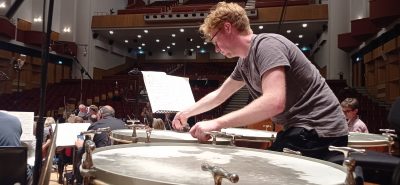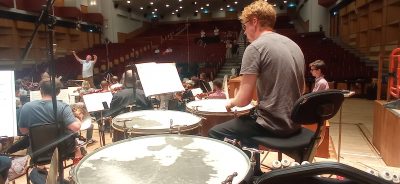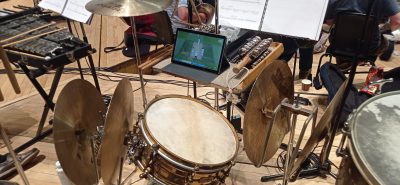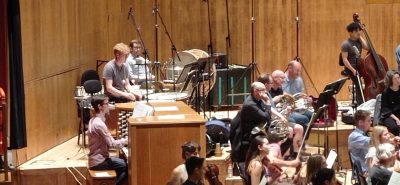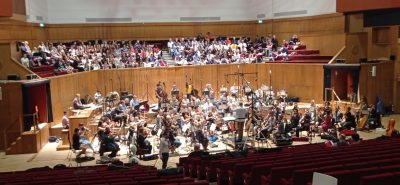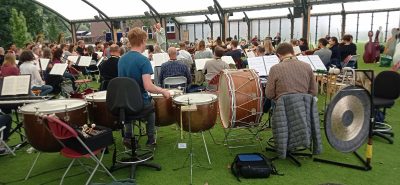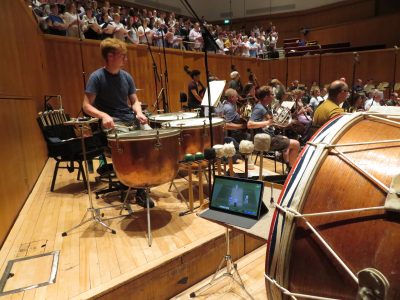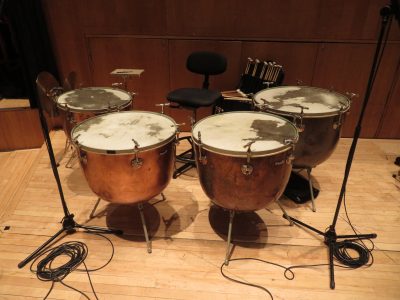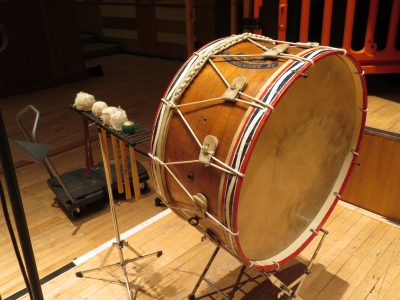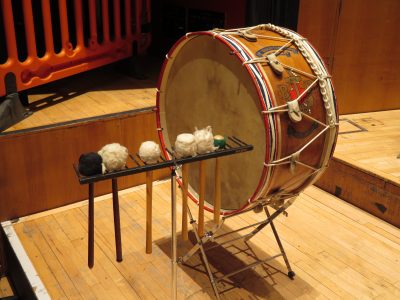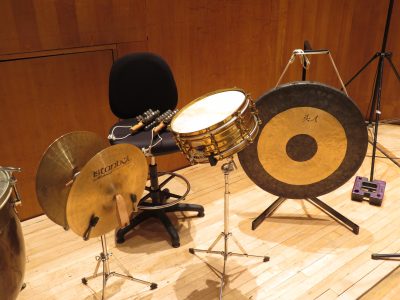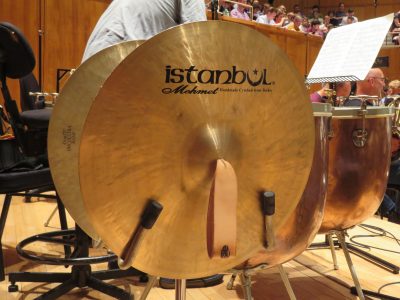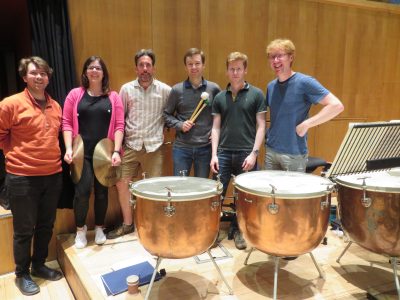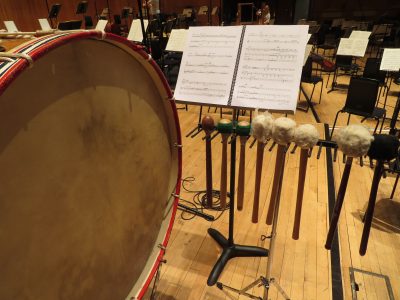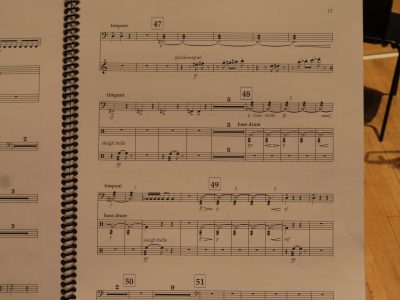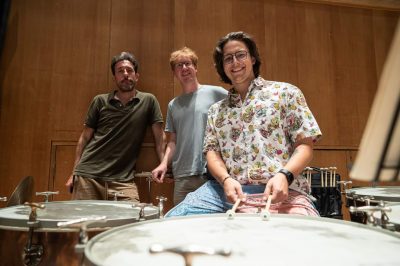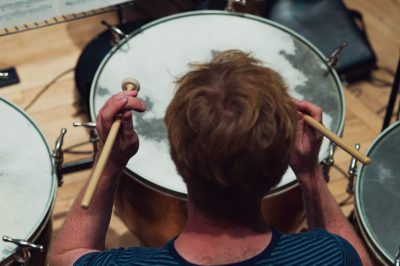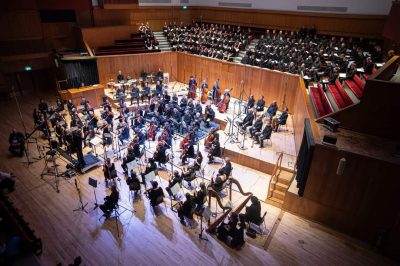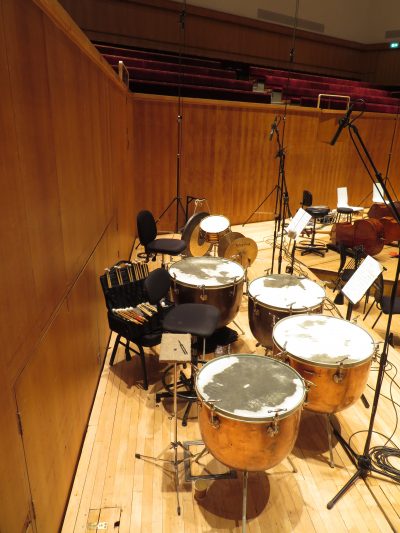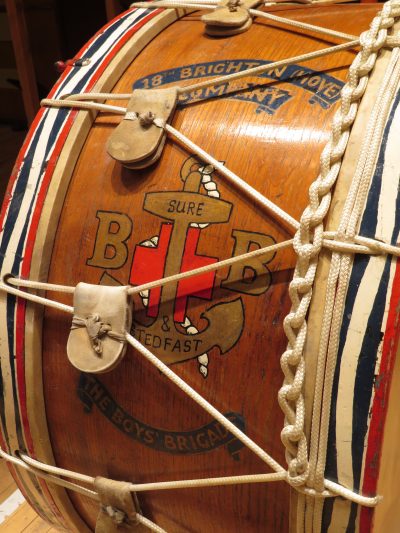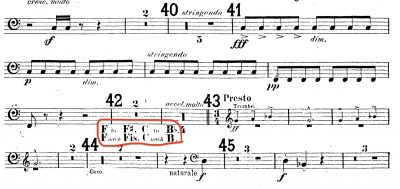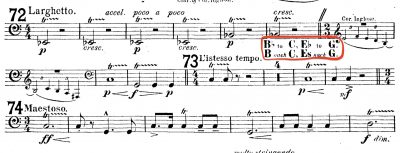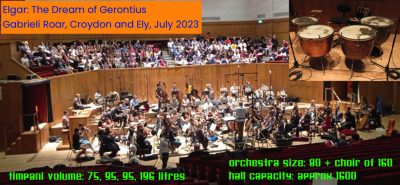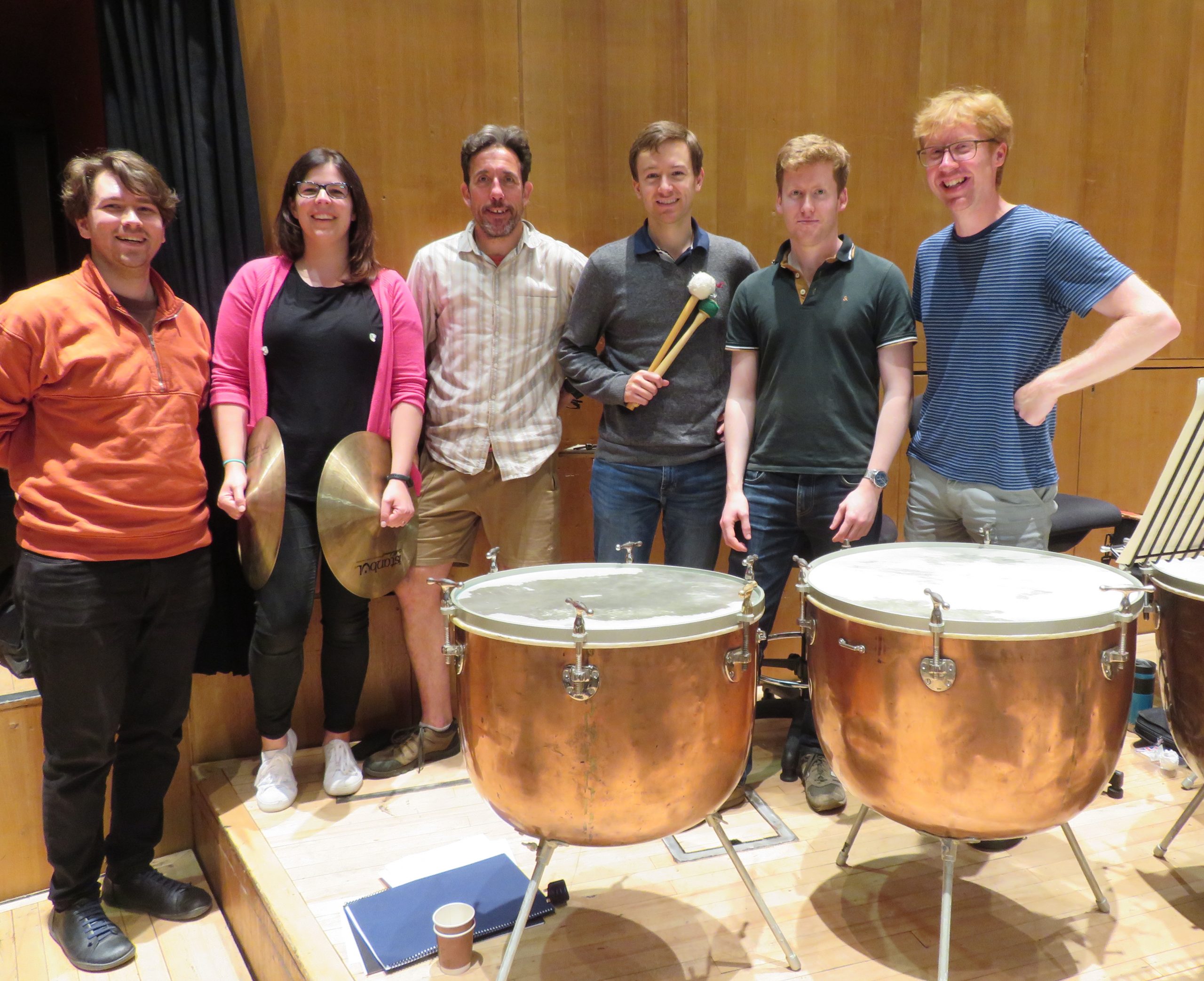Elgar – The Dream of Gerontius, Gabrieli Roar 2023, concerts and recording, July 2023.
Diary clashes meant I was very happy to play percussion and the timpani part was excellently navigated by the fabulous Jude Carlton 👏👏👏👏👏 of Royal Northern Sinfonia.
It is interesting to think about the writing and development for timpani at the turn of the 20th Century. Our instruments developed slower in Britain at the time and Elgar (1900) was clearly writing for hand-tuned timpani. Compare this to ‘Salome’ (1905) and Mahler symphonies (1901-10).
Elgar I would suggest seems to be writing for the whole orchestra in a way that meant his music could be performed by regional, youth and amateur orchestras who probably didn’t have state-of-the-art instruments. Strauss on the other hand must have known that some of his harder operas with unusual instruments could only be performed by a handful of elite companies in major cities.
Although german timpani started to come into Britain at this time, this was rare and didn’t happen quickly and the most elite orchestras would have used timpani like this for the hardest and newest repertoire for some time to come.
The timpani part of Gerontius is taxing but cleverly written. It seems to assume that 3 timpani is normal (because he specifically mentions using a 4th drum), but we would always use 4 in any case to try to reduce the amount of quick changes. Frequent and relentless changes can be frustrating and tiring as it is hard to get the drums to settle, because as soon as they do, they frequently need to be changed again…
This was compounded this week as one day of rehearsals had to be moved to an outside venue. Anyone who has played timpani outdoors will agree it presents a whole new set of difficulties but here Jude got through this most difficult of situations very impressively indeed.
As I had time to watch quite a bit of the culmination of ‘The Ashes’ cricket, I was able to muse on the interesting parallels between cricket and outdoor timpani playing; both requiring a high level of attention to the weather, how this is completely beyond one’s control yet can drasticallty affect how your day is probably going to go!
The percussion instruments are; British bass drum, 30″ (date unknown), Dresden snare drum (early 20th Century), modern Premier glockenspiel, Istanbul 17″ cymbals, Wuhan 30″ tam tam, Sabian triangle and sleigh bells.
The bass drum is probably early 20th Century. It is 30″ in diameter, a modern one would be approx 36-40″. This sort of drum was made for amateur orchestras and wind and brass bands but would also have been used by professional symphony orchestras. The main difference from a modern drum is the tensioning. On this drum the tensioning is done by ropes. And with the leather sliders we can tune the drum – this is mostly to do with getting a suitable sound from it and the tension of the skin changes dramatically with the weather!
The side drum is a german drum made in Dresden and it is probably about 100 years old. Modern drums are the same proportions as this. Modern drums tend to have plastic heads (which now are quite a close sound to natural heads) but many modern players are going back to using natural heads.
Metal instruments don’t tend to last very well. Metal fatigue means they can crack or deterioate and just lose their good sound. And so the cymbals, triangle, glockenspiel, tam tam and sleigh bells are all modern instruments, but were chosen for their sound as to what we think would have been used in Elgar’s time. It is dangerous to generalise but today’s players often choose louder percussion instruments because they need to project across modern orchestras which tend to be louder than those using old instruments. We don’t need to worry so much about this. For example the cymbals are only 17″ in diameter and quite thick and therefore have shorter and more percussive clash sound. Modern orchestras would tend to use thinner and so louder perhaps 19″-21″ cymbals for this piece.
Sticks and heads – we try to use sticks that are identical or similar to those of the period, since hardly any originals survive. We use calf-skin drum heads that we believe are as similar as possible to what Elgar would have heard. Skins definitely do not survive 100 years! And so the choice of sticks goes hand in hand with the heads and pursuing the eventual sound, as true as possible as far as we can guess!, governs our choices.
Players (L-R); Jon French, Becky McChrystal, me, Luke Taylor, Nick Cowling and Jude Carlton
My timpani and percussion score part of this piece will be available soon.
